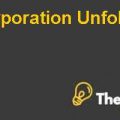Fund Development and Financial Management for Non-profit organizations Case Study Solution
Common size analysis of Income Statement:
From the analysis of income statement, we can conclude that company is performing well as compared to the past years. In 2016/17, company has the gross margin of 37% and in 2017/18, it has increased to 39.29%. Moreover, the net income margin of the company in 2016/17 was -3.10% and it has improved to 1.33% in 2017/18. (Refer to Excel)
Common size analysis of Balance Sheet:
In the common size analysis of balance sheet, we examine the assets portion by comparing it with the total assets. From this evaluation, we can conclude that the non-current assets to total assets in 2016/17 are 36.5% and they have increased to 41.7% in 2017/18. The current liabilities to the total assets in 2016/17 account for 13.1% and have increased to 15.1% in 2017/18. Capital to the total assets is 86.9% in 2016/17 and it has decreased to 84.9% in the fiscal year 2017/18. Major change is in capital from 2016/17 to 2017/18, the capital has decreased by 9.7% in 2017/18. (Refer to Excel)
Ratio Analysis:
Profitability Ratios:
Profitability ratios determine the capability of the company to generate earnings with the comparison of its expenses. We can analyze the profitability position of the company by calculating gross profit and a net profit ratio of the company. The reported gross profit margin and net profit margin of HKSSI were 37% and -3.10% respectively in 2016/17 while in 2017/18 they have become 39.29% and 1.33% respectively. The profitability performance of the company reveals that the company effectively controls its expenses thus, this improves the overall earning position of the company. (Refer to Excel)
Performance Ratio:
The effectiveness of the company that how well it uses its resources to generate the income can be determined through the performance ratios. To analyze the performance of the company, we generally calculate receivable turnover days and payable turnover days’ ratios. The receivable turnover days and payable turnover days’ ratios of the company are 29.72 and 35.20 in 2016/17. With the passage of time, receivable turnover days and payables turnover days increased. In 2017/18, receivable turnover days and payable turnover days have become 33.94 and 35.64 respectively. (Refer to Excel)
The outcomes of common size analysis and ratio analysis revealed that the operating performance of the company from 2016 to 2017 is in improving phase. The results show that the company effectively controls its expenses to generate incomes. Moreover, by analyzing current assets and fixed assets, we can conclude that the company invests more in non-current as they have increased by 5.6%. Non-current assets consist of two accounts, property, plant and equipment and available for sale investment though property, plant, and equipment have decreased by 3.3% on the other hand, available for sale investment has increased by 6%, thus total non-current assets have increased by 5.6%. Moreover, current assets have decreased by 15.2%. (Refer to Excel)
Cash position
Company’s cash and bank balances have decreased by 18.1% in 2017/18 as compared to 2016. By looking at the financial position, we can say that company has invested more money in the available for sale investments that have increased by 6% in 2017/18.
The company has spent cash on the non-current assets as they have increased by 5.6%.
It seems like the company is focusing on collecting the account receivable as its receivables have decreased by 9%.
b.Major issues
One of the major issues is that despite increasing net income in 2017/18, company’s cash and bank balances have decreased by 18.1%, this is a huge percentage and thus it is one of the major issues for the company when we look at its performance.
Another issue faced by the company is that company’s fund and reserves have decreased by 9.7% in 2017/18. Funds and reserves include General fund, Investment revaluation reserve, Social innovation and designated fund, staff development fund and specific grant fund form ABC foundation. Despite staff development fund that has increased by 26.6%, remaining fund and reserve accounts have decreased in the fiscal year 2017/18.
The General Fund, Investment revaluation reserve, Social innovation and designated fund, and specific grant fund that form ABC foundation have decreased by 11.3%, 11.8% 10.6% and 13.2% respectively and at last, the total fund and reserve accounts have decreased by 9.7%, and it is another issue faced by the company.
c. Fundraising strategies
Capital Campaigns
Capital campaigns are one of the strategies that HKSSI can use to raise fund for its non-profit organization, as the financial position of HKSSI shows that the company has witnessed the decrement in fund and reserves that have decreased by 9.7% in 2017/18, so company can use capital campaign strategy to raise the fund.
A capital campaign refers to the movement to generate the funds for a specific initiative and this campaign is selected when you need to collect the target sum of amount for initiating a large-scale program....................
This is just a sample partial case solution. Please place the order on the website to order your own originally done case solution.













